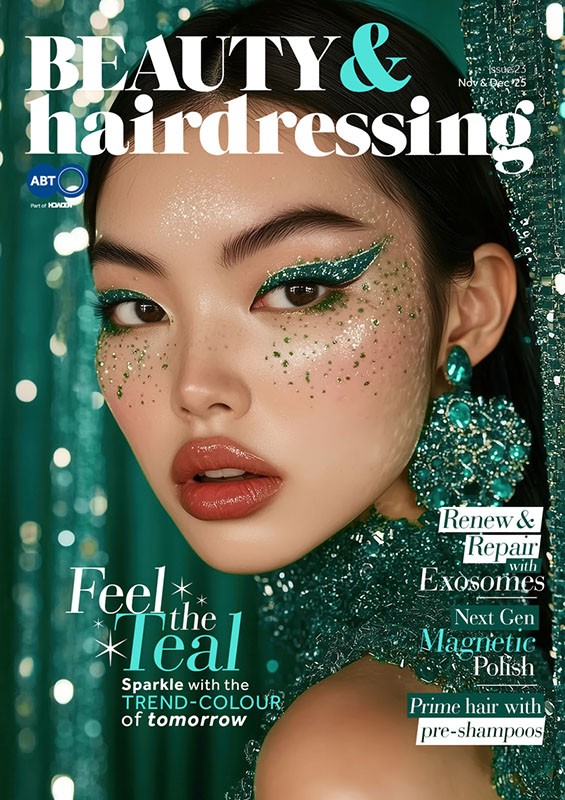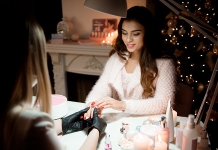Expert Advice: Do they know it’s counterfeit?
Rachel Jones offers advice for beauty and hair brands on combatting counterfeits of your products.
 It's the most wonderful time of the year – especially for counterfeit criminals. The lead up to Christmas is a time when consumers must be extra vigilant when shopping online and this year is no exception. As Covid-19 continues to accelerate the uptake of online shopping, Christmas 2020 could see the biggest spike in online counterfeits yet.
It's the most wonderful time of the year – especially for counterfeit criminals. The lead up to Christmas is a time when consumers must be extra vigilant when shopping online and this year is no exception. As Covid-19 continues to accelerate the uptake of online shopping, Christmas 2020 could see the biggest spike in online counterfeits yet.
According to the Intellectual Property Office, cosmetics was number three in the list of top ten most investigated counterfeit products by the Trading Standards in 2019-20.
The harsh reality? The number of counterfeiters making big bucks out of stolen ideas continues to grow and every sector is affected, including cosmetics.
Shockingly, the IP Crime and Enforcement report of 2019-20 revealed that over 47,240 articles of fake body care items, including cosmetics and perfumes were seized. Copycat cosmetics like these can put consumers in serious danger. The toxic and hazardous materials used in fake products can cause swelling and rashes, and in extreme cases, even cancer.
Yet it is not just consumers that are in harm's way when it comes to counterfeits. Brands suffer too. Fakes flooding online marketplaces, like Amazon or Alibaba, can have a crippling impact on a company's financials. Trust me, I know this from personal experience after my own product was counterfeited in 2013.
On top of this, counterfeits can also cause serious harm to a brand's hard-earned reputation. Fake goods that fall into the hands of unsuspecting consumers not only cause a raft of unfair reviews, but these reviews can ultimately impact a brand's bottom line.
So, what can cosmetics companies do to protect their products and, most importantly, their customers? Here are our five top tips...
1. File a trademark
One of the most effective ways to protect your brand is to file a trademark in all of the countries you wish to sell, or manufacture, in. These symbols of authority are among the most cost-effective form of intellectual property (IP) protection, and act as your first line of defense when it comes to proving ownership of a product. Trademark attorneys often offer very low-cost trademark registration, although it is possible to file one yourself.
You may also be able to file Design Rights for your products. These agreements automatically protect your designs for 10 years after the product was first sold, or 15 years after it was created. Protecting the shape and configuration of your product, not the function; these rights can be extremely useful when disputing a design duplicate online.
2. Change up your packaging
Not only does a change in packaging bring a refresh to your brand, but it means the counterfeiters need to keep up, and the more difficult you can make life for them, the better.
Make sure to communicate any branding changes to the people that need to know through your website and via your social channels, keeping resellers updated with new images.
If you're updating your product spec itself, again, keep those who need to know updated but don't give away every single difference between the original and the fake on your website. Keep something up your sleeve so you can keep two steps ahead…
3. Consider your markets
Counterfeiting can be a big problem anywhere, it is not something unique to China. If you're heading to China however, do consider a non-disclosure, non-use, non-circumvention agreement (NNN). This is more effectively enforced in China than a standard UK or US non-disclosure agreement (NDA) and should help to keep your intellectual property (IP) safe.
Ensure that you sign this agreement before any information is shared, to keep your product specifications as secure as possible. Try, wherever possible, to build a direct relationship with your factory wherever it is, it will become worth its weight in gold.

Make a conscious effort to consistently monitor for fraudulent listings online. If you see a product that seems suspicious, buy it. While it may seem counterintuitive to buy a fake, this can be a simple and effective way of scoping out the product's differences and confirming that the product is not the real deal.
If you do find that one of your products has been counterfeited, it is important not to panic. If action is taken immediately, the situation can be resolved and with minimal damage to your brand or consumers. Most established online marketplaces have an official reporting process, so make sure to register your complaint with them swiftly and have your evidence at the ready (this is where buying the product comes in handy!) and your intellectual property certificates to hand, to prove originality. Once proven to be a fake, most marketplaces will be quick to remove the link and raise concerns about the seller.
But you don't have to do it on your own. Brand protection agencies like ourselves have dedicated brand protection experts that monitor online marketplaces to find fakes and take them down, protecting your customers, your revenue and your reputation.
5. Include a secret ingredient
One final effective and creative way to protect your brand online is to include ‘secret ingredients' in your products. This could include everything from a personalised holographic security image to a thread which is only visible under certain lighting. Counterfeits working at speed are likely to miss subtle touches like these, adding another string to your bow when it comes to stamping them out for good.
Make sure to share these secrets selectively with key stakeholders and the Customs Authorities, widening the net of allies who can spot and report fakes quickly.
While the Christmas period is often the most profitable time of year for beauty brands, online counterfeiters can quickly dampen the festive cheer. By taking clever steps to prove the authenticity of your products, staying vigilant online, and keeping a handle on partner agreements abroad, beauty brands can effectively protect themselves and their consumers from counterfeit crooks this Christmas.
Rachel Jones is CEO of SnapDragon, an Edinburgh-based brand protection agency that protect brands against counterfeiting and other online intellectual property (IP) infringement.








